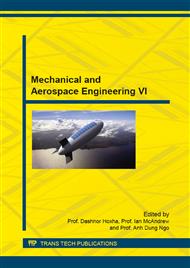[1]
IEA Electricity Information (2010 Edition). Information on http: /wds. iea. org/wds/pdf/documentation_EleInfo_prelim2010. pdf.
Google Scholar
[2]
IEA Energy statistics of non-OECD countries (2010 Edition).
Google Scholar
[3]
IEA CO2 emissions from fuel combustion - Annual historical series (1971-2008).
Google Scholar
[4]
US Energy Information administration (EIA, www. eia. doe. gov, installed capacity non OECD).
Google Scholar
[5]
Energy statistics (Eurostat), 2014. Information on http: /www. eea. europa. eu/data-and-maps/data/external/energy-statistics-eurostat.
Google Scholar
[6]
IEA Electricity Information (2010 Edition). Information on http: /www. iea. org/Textbase/nptoc/elec2014toc. pdf.
Google Scholar
[7]
European Commission (COM(1997) 599 final): Communication for the Commission. Energy for the future: Renewable sources of energy. White Paper for a Community Strategy and Action Plan. 1997.
Google Scholar
[8]
Renewable Energy Snapshots 2010,. Hans Bloem, Fabio Monforti-Ferrario, Marta Szabo and ArnulfJäger-Waldau. Information on http: /publications. jrc. ec. europa. eu/repository/bitstream/111111111/14436/1/reqno_jrc59050_re_snapshots_eur_2010. pdf%5b1%5d. pdf.
Google Scholar
[9]
Renewable Energy Snapshots 2010,. Hans Bloem, Fabio Monforti-Ferrario, Marta Szabo and ArnulfJäger-Waldau. Information on http: /publications. jrc. ec. europa. eu/repository/bitstream/111111111/14436/1/reqno_jrc59050_re_snapshots_eur_2010. pdf%5b1%5d. pdf.
Google Scholar
[10]
Eurostat 56/2010. Information on http: /epp. eurostat. ec. europa. eu/cache/ITY_OFFPUB/KS-SF-10-056/EN/KS-SF-10-056-EN. PDF.
Google Scholar
[11]
Directive 2009/28/EC of the European Parlament and of the Council of 23 April 2009 on the promotion of the use of energy from renewable sources and amending and subsequently repealing Directives 2001/77/EC and 2003/30/EC.
DOI: 10.3030/734137
Google Scholar
[12]
EWEA 2010. Consumption figure for 2020 taken from EC PRIMES 2010 (3, 690 TWh).
Google Scholar
[13]
Information on http: /ec. europa. eu/energy/renewables/transparency_platform/action_plan_en. htm.
Google Scholar
[14]
http: /ec. europa. eu/energy/observatory/trends_2030/index_en. htm.
Google Scholar
[15]
Renewable Energy Snapshots 2010,. Hans Bloem, Fabio Monforti-Ferrario, Marta Szabo and ArnulfJäger-Waldau http: /publications. jrc. ec. europa. eu/repository/bitstream/111111111/14436/1/reqno_jrc59050_re_snapshots_eur_2010. pdf%5b1%5d. pdf.
Google Scholar
[16]
The European Wind Initiative. Wind power research and development for the next ten years. A European Wind Energy Association briefing - June 2014. http: /www. ewea. org/fileadmin/ewea_documents/documents/publications/EWI/EWI_2014, final. pdf.
DOI: 10.1541/ieejpes.134.nl8_3
Google Scholar


